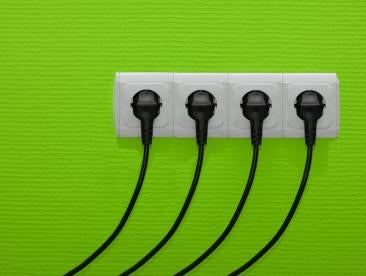At the Northeast Clean Energy Council’s (NECEC) latest Emerging Trends Series forum on July 11, 2018, leaders from the clean energy industry and the public sector convened to discuss the future of energy efficiency in the Northeast. This forum featured speakers from leading companies and organizations working to drive energy efficiency in the Northeast through new policy mechanisms and with innovative technologies and service models.
I was honored to moderate this lively discussion. Attendees heard first-hand accounts of ongoing and future projects geared towards promoting energy efficiency from four panelists:
- Sue Coakley, Executive Director of the Northeast Energy Efficiency Partnerships (NEEP)
- Tim Fu, Group Product Manager at FirstFuel Software
- Anna Pavlova, Vice President of Government Relations at Schneider Electric
- Anne Reynolds, Executive Director of the Alliance for Clean Energy New York (ACE NY)
Over the course of two hours, we were able to touch on a wide array of topics in the energy efficiency space. Here are the four key takeaways:
- We have done an excellent job of promoting energy efficiency in lighting, but we need to look elsewhere for future savings. Most of our savings have been in lighting. In fact, we have seen about $4 billion in energy efficiency savings through innovation in lighting in Massachusetts. However, this source of energy efficiency is rapidly diminishing as LED lighting continues to be cemented as the standard for lighting, so we must look to other sources for potential opportunities to promote energy efficiency.
- There is an increased need for integrated data analytics and management and the use of policy interventions to promote energy efficiency. The panelists noted that the current data-centric era calls for an increased need for data management, accessibility, and transparency. One place where this is evident is in commercial buildings, where there is an increased demand for energy efficiency infrastructure to be connected to technology on mobile and portable devices in order to streamline building manager’s abilities to manage multiple responses quickly.
- Public policy can advance energy efficiency initiatives in the region.Drawing on recent policy initiatives launched in New York City and Washington, D.C., the panelists noted the power of the legislature in driving change. When the industry fails to increase the rate of investment in energy efficiency, the panelists noted that public policy should step in to ensure investment in the sector.
- Focus on the customer and the industry as a whole is key. The path forward must focus on the continued exploration of ways to evolve and align incentives, policies and practices to advance investment in energy efficiency in ways that are more strategic and valuable to the customer and industry as a whole.
The palpable excitement of attendees and the robust discussion made it clear that the Northeast is poised to continue dominating as the lead region in the energy efficiency space.




 i
i

